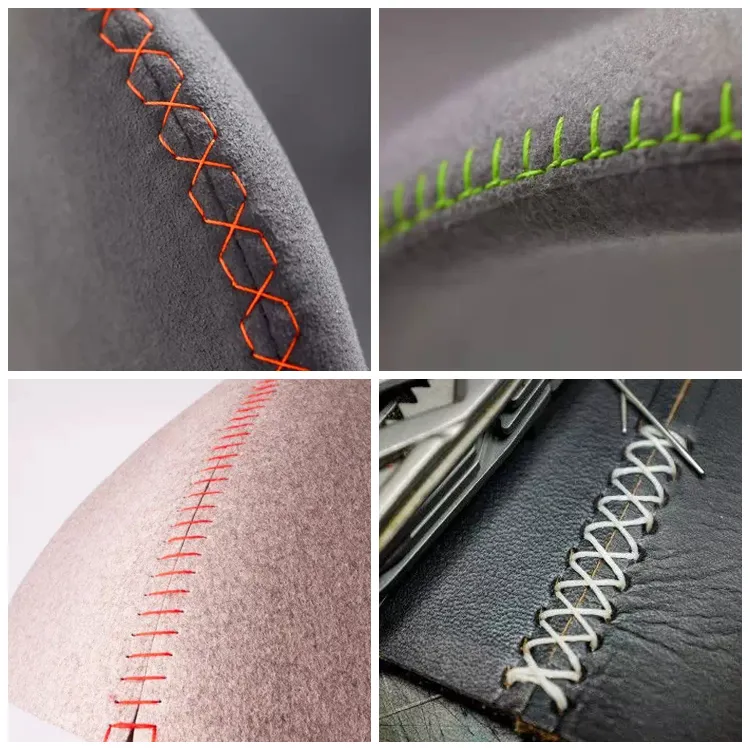Creating Beautiful Patterns with Double Zigzag Stitch Techniques and Tips for Success
Exploring the Double Zigzag Stitch A Versatile Technique in Sewing
The double zigzag stitch is a fascinating and highly versatile stitch that has gained popularity among sewing enthusiasts and professionals alike. This stitch, with its unique appearance and functional benefits, is an essential technique to master for anyone looking to enhance their sewing projects. Whether you are a beginner or an experienced sewist, understanding the double zigzag stitch can elevate your crafting skills and lead to more durable, aesthetically pleasing creations.
What is a Double Zigzag Stitch?
The double zigzag stitch is created by sewing two parallel zigzag paths, which gives it a distinctive, decorative look. Unlike the standard zigzag stitch that consists of single strokes moving left and right, the double zigzag stitch reinforces the edges, providing additional strength and flexibility. This stitch can be found on most modern sewing machines, often labeled as a zigzag stitch option in your machine's settings.
Applications of the Double Zigzag Stitch
One of the primary applications of the double zigzag stitch is to finish the raw edges of fabrics. When working with woven materials, edges are prone to fraying and unraveling. The double zigzag stitch encases the edges, preventing this damage and prolonging the life of your garments and projects. This is particularly useful for fabrics like linen, cotton, and silk, where fraying can occur easily during washing or wearing.
double zigzag stitch

Beyond edge finishing, the double zigzag stitch serves well in garment construction for areas that require flexibility, such as seams and hems. Given its elasticity, this stitch allows for stretching without breaking, making it an ideal choice for knit fabrics and activewear. Moreover, its decorative aspect opens doors for creative designs, allowing sewists to add flair and texture to projects.
How to Sew a Double Zigzag Stitch
To sew a double zigzag stitch, begin by selecting the appropriate setting on your sewing machine. Ensure you have a suitable needle—usually a ballpoint needle for knits and a universal needle for woven fabrics. Adjust the stitch width and length based on your fabric type and desired aesthetic. Typically, a wider stitch will create a more pronounced zigzag, while a narrower one will be subtler.
When ready, place your fabric under the presser foot and guide it slowly, ensuring even stitching. For raw edges, run the stitch along the edge of the fabric, allowing the dual zigzag pattern to cover the unfinished sides. It’s advisable to practice on scrap fabric before proceeding to your main project to gain confidence and achieve the desired look.
Conclusion
The double zigzag stitch is a subtle yet powerful tool in the realm of sewing. Its ability to secure edges, provide flexibility, and add decorative elements makes it a favorite among sewists at all skill levels. As you continue to explore the world of sewing, integrating this stitch into your repertoire can lead to more polished finishes and creative possibilities. Embrace the double zigzag stitch, and watch as your sewing projects transform with additional durability and style. Whether you’re creating simple home decor, intricate garments, or unique accessories, this technique is sure to enhance your craft.
-
Industrial Cylinder Arm Sewing Machine: Revolutionizing Heavy-Duty SewingNewsJul.28,2025
-
Cylinder Arm Sewing Machine: Perfect for Special Sewing ApplicationsNewsJul.28,2025
-
Cylinder Bed Sewing Machine: Essential for Sewing Complex MaterialsNewsJul.28,2025
-
Heavy Duty Sewing Machine: The Essential Tool for Industrial ApplicationsNewsJul.28,2025
-
Computerized Pattern Sewing Machine: Revolutionizing Precision StitchingNewsJul.28,2025
-
Heavy Duty Industrial Sewing Machine: Power Meets PrecisionNewsJul.28,2025
-
Leather Sewing Machine: The Industrial Standard for Tough MaterialsNewsJul.18,2025





























